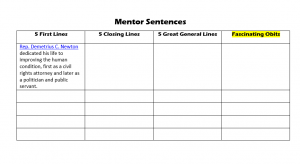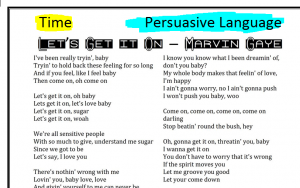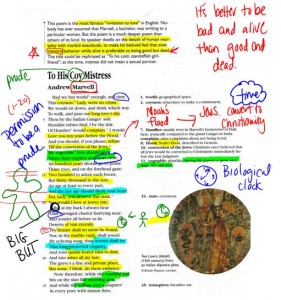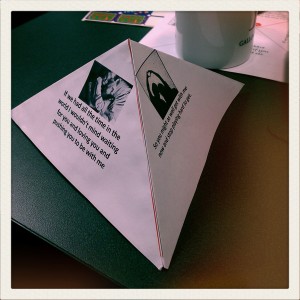We started out making a foldable – just making it. We will add little bits to it each day after we read. We’ve changed a few topics from the foldable to the left – just check with me and we can get you the right titles.
![20140911_093132[1]](https://vriley.edublogs.org/files/2014/09/20140911_0931321-2k4sene-e1410446290542-168x300.jpg)
Today we started reading Beowulf. We will read just one section a day, so that means if you find the poem boring (I didn’t write it – it doesn’t hurt my feelings!), I won’t commit readicide on you by making you read for all 80 minutes of class. You can thank me later.
Today, we skimmed the background notes and read The Wrath of Grendel.
We spent some time talking about mead, the mead hall, and Bass Shandy soda.
If you weren’t here, you missed watching me jump on desk growling and you missed me harassing students with “Grendel”. Read this on your own and be familiar with it.
For first block, I explained the Metaphorical Response! A metaphor is a comparison between two UNLIKE things.
From Metaphor Examples:
A metaphor is a comparison between two unlike things not using the word “like” or “as” to make the comparison. The greater the difference between the two things being compared, the better the metaphor. For example, if one were to say that “Football is baseball,” that would not be a good metaphor, because football and baseball are both sports. However, if one were to say that “football is chess,” that would generally be considered a better metaphor because there is a greater difference between football and chess than football and baseball.
That webpage has fifty good examples of metaphors, like this: The typical teenage boy’s room is a disaster area.
So, you’ll be finding a metaphor for the ten elements on the worksheet and explaining it. If you need help, check out the example in BB.
You only need to have ONE quote – not two or three like the example shows.
Just make sure that you use good metaphors.
For example (and don’t use this one), Grendel is nasty. No one likes him. No one wants him around, but no one can stop him.
Column 1: Grendel is like a SBD (silent but deadly fart).
Column 2: SBD farts are silent and sneak up on you. They are very powerful, and take down everyone within sniffing zone. The only way you can survive a SBD is if you run away! Not only are they silent, but you can’t see them.
Column 3: Grendel is very strong, and no one can defeat him. No one likes him, no one wants him around, but no one can figure out how to deal with him or get rid of him. Anyone who goes up against him, is destroyed. Just like a SBD, the only way you can survive an attack with Grendel is if you run away. Because Grendel hunts at night and the only survivors are those who flee, no one has ever seen Grendel, either!
Column 4: One quote that proves your comparison. Since we used a PDF file for Beowulf, you can’t copy and paste, so you’ll need to type it manually.
We ran out of time in second block because we talked about ticks so much, so I’ll go over that with you guys (and play the game!) tomorrow!
![]()
![]()





![20140911_093132[1]](https://vriley.edublogs.org/files/2014/09/20140911_0931321-2k4sene-e1410446290542-168x300.jpg)